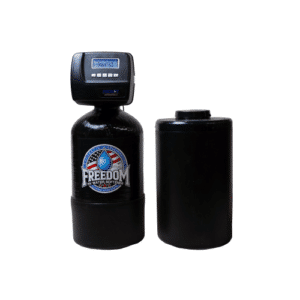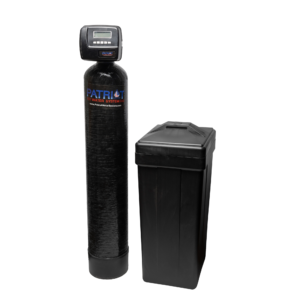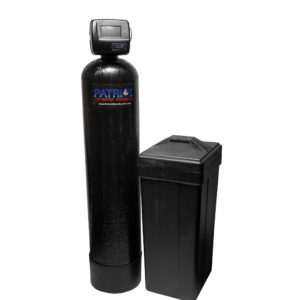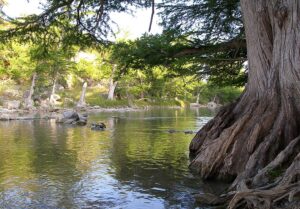Annual Water Softener Maintenance Checklist

Shop Our Products

Freedom RV Water Softener System
Specifically for RV and fifth-wheel owners, this high-quality system guarantees your RV’s water is pure,



Maintaining your home’s water softener is key to making sure it runs efficiently and extending its lifespan. Neglecting maintenance can lead to a host of problems, including hard water build-up, reduced water pressure, and even system failure.
A yearly maintenance routine goes a long way in keeping your water your system running smoothly. We’ve put together this annual maintenance checklist to help you avoid costly repairs.
Why Water Softener Maintenance Is Important
Without regular maintenance, you might notice spots on your dishes, soap that won’t lather, or even damage to your pipes and appliances, meaning your water softener needs maintenance. Regular upkeep ensures that the resin beads are functionally properly through all stages of the water softener regeneration process and the system is free of clogs and other obstructions. Plus, it can help you identify potential problems before they become costly repairs.
To recap:
- Ensure Efficient Performance: Regular checks and cleanings prevent blockages and maintain the efficiency of the unit.
- Extend Lifespan: Well-maintained water softeners last longer, saving you money in the long run.
- Prevent Hard Water Problems: Consistent maintenance ensures your water softener continues to remove minerals effectively, preventing scale buildup in your pipes and appliances.
Tools and Supplies You’ll Need
- Soft cloths or sponges
- Soft brush
- Bucket
- Water softener cleaner
- High-quality salt (pellets or crystals)
- Screwdriver
- User manual of your water softener
Maintenance Checklist
1. Inspect the Salt Level Of Your Water Softener
This is the most basic, and most important step. Open your brine tank and check the salt. It should be about half full and always sitting above the water line. Running low? Add fresh salt, but don’t overfill, because this can actually cause problems.
Pro tip: Use pure water softener salt pellets instead of rock salt to prevent buildup
Time needed: 5 minutes
2. Clean the Brine Tank
Once a year, give your brine tank a good cleaning to remove buildup.
- Scoop out any remaining salt
- Remove the brine grid (if your unit has one)
- Mix warm water with a bit of dish soap and use a soft cloth or sponge to scrub the interior
- Rinse thoroughly with clean water
- Refill with salt and water according to your system’s manual
Time needed: 30-45 minutes
3. Check for Salt Bridges
A salt bridge is a hard crust that forms in your brine tank like a sheet of ice floating on the surface of the water. If you’ve got one, your system can’t regenerate properly.
- Push a broom handle straight down into the salt
- If you hit something hard before reaching water, you’ve got a bridge
- Break up any hard crust you find
- Remove the chunks that break off
Time needed: 10-15 minutes
4. Clean the Resin Tank
The resin tank can also benefit from annual cleaning. Use a water softener cleaner that’s safe for your system.
- Pour the cleaner into the brine tank according to the manufacturer’s instructions.
- Manually regenerate the system to flush out the old resin beads and clean the tank.
- Run a manual regeneration cycle
- Let the system complete a full cycle
Time needed: 1-2 hours (mostly waiting for regeneration)
5. Inspect the Valves and Settings
Take a few minutes to inspect your system’s main components.
- Look for leaks around all connections
- Make sure valves turn smoothly
- Check your timer settings
- Verify hardness settings match your water supply
- Listen for unusual noises during regeneration
Time needed: 15-20 minutes
6. Flush the System
To finish up, it’s good practice to flush the entire system with clean water. This helps to remove any residual cleaner and ensures that all components are working correctly.
Additional Tips for Water Softener Maintenance
- Use the Right Salt: High-purity salt is best for preventing build-up and ensuring proper regeneration. Avoid using rock salt, which contains more impurities.
- Check for Iron Build-up: If your water has high iron content, use an iron removal product to clean the resin bed and prevent clogging.
- Maintain the Bypass Valve: Make sure the bypass valve is in the correct position. Occasionally switching it on and off can help keep it from sticking.
- Monitor Water Hardness: Regularly test your water hardness to ensure your water softener is working correctly. If the water feels hard, it may be time for a manual regeneration or maintenance check.
- Regular Regeneration: Ensure your water softener regenerates regularly. Some units do this automatically, while others may need manual intervention.
Troubleshooting Common Issues
Even with regular maintenance, you might encounter some issues. Here’s how to troubleshoot common problems:
- Low Water Pressure: Check for clogs in the resin tank or salt bridges in the brine tank.
- Salty Taste in Water: This could be due to a malfunctioning valve or improper salt levels.
- Hard Water: Ensure the system is regenerating correctly and that the settings are accurate.
- Noisy Operation: Unusual sounds could indicate a problem with the motor or valves. Inspect these components and consult your user manual.
- Check the water level in your brine tank.
Wrapping Up
Performing at least an annual maintenance on your water softener is important for keeping your water clean and your system running efficiently. By following this checklist, you can prevent common issues and extend the life of your water softener. Remember, a well-maintained water softener means less hassle and more reliable soft water for your home.
For more detailed guides and tips, be sure to check out additional resources and don’t hesitate to consult your water softener’s user manual for specifics related to your model.
FAQ
How often should I add salt to my water softener?
Typically, you’ll need to add salt every 6-8 weeks, but this can vary depending on your water usage and hardness level.
Can I use any type of salt in my water softener?
It’s best to use high-purity salt specifically designed for water softeners to avoid build-up and other issues.
What should I do if my water softener is not regenerating?
Check the timer settings and ensure there’s no salt bridging. If the problem persists, consult the user manual or contact a professional.
How do I know if my water softener needs maintenance?
Signs include hard water spots, changes in water taste, reduced water pressure, and salt buildup in the brine tank. For more details, check out What is Hard Water?
What happens if I don’t maintain my water softener?
Lack of maintenance can lead to inefficient operation, scale buildup in your plumbing, and potentially costly repairs or replacements.
Is professional maintenance necessary?
While some tasks can be done by homeowners, such as checking the salt level in the brine tank or cleaning the exterior of the system, it’s often best to have a professional handle the comprehensive annual maintenance. This is because they have the expertise and tools to thoroughly check and service all components, ensuring your system is in top condition and operating efficiently.
Share:
Talk to A Water Quality Expert
Shop Our Products

Freedom RV Water Softener System
Specifically for RV and fifth-wheel owners, this high-quality system guarantees your RV’s water is pure,




How much does an RV Water Softener Cost?
Budget-friendly portable water softeners range from about $200-$400, while high-end self regenerating systems start around $1,500. This guide breaks down the options and benefits to help you decide what’s right for you.

How To Maintain Your RV Water Softener
Taking care of your RV water softener keeps your plumbing safe and your appliances running smoothly. This guide covers how to handle both self regenerating and manual units, troubleshoot common issues, and some helpful tips to keep maintenance easy.

Are Water Softener Systems Worth It in Bulverde, Texas?
In Bulverde, hard water with high levels of calcium and magnesium is a common issue. Installing a water softener system can prevent scale buildup, extend the life of appliances, and improve skin and hair health. The benefits often outweigh the costs, making water softeners a worthwhile investment for Bulverde residents.
Join Our
Newsletter
Get the latest information, and exclusive offers on water softening and purity solutions
